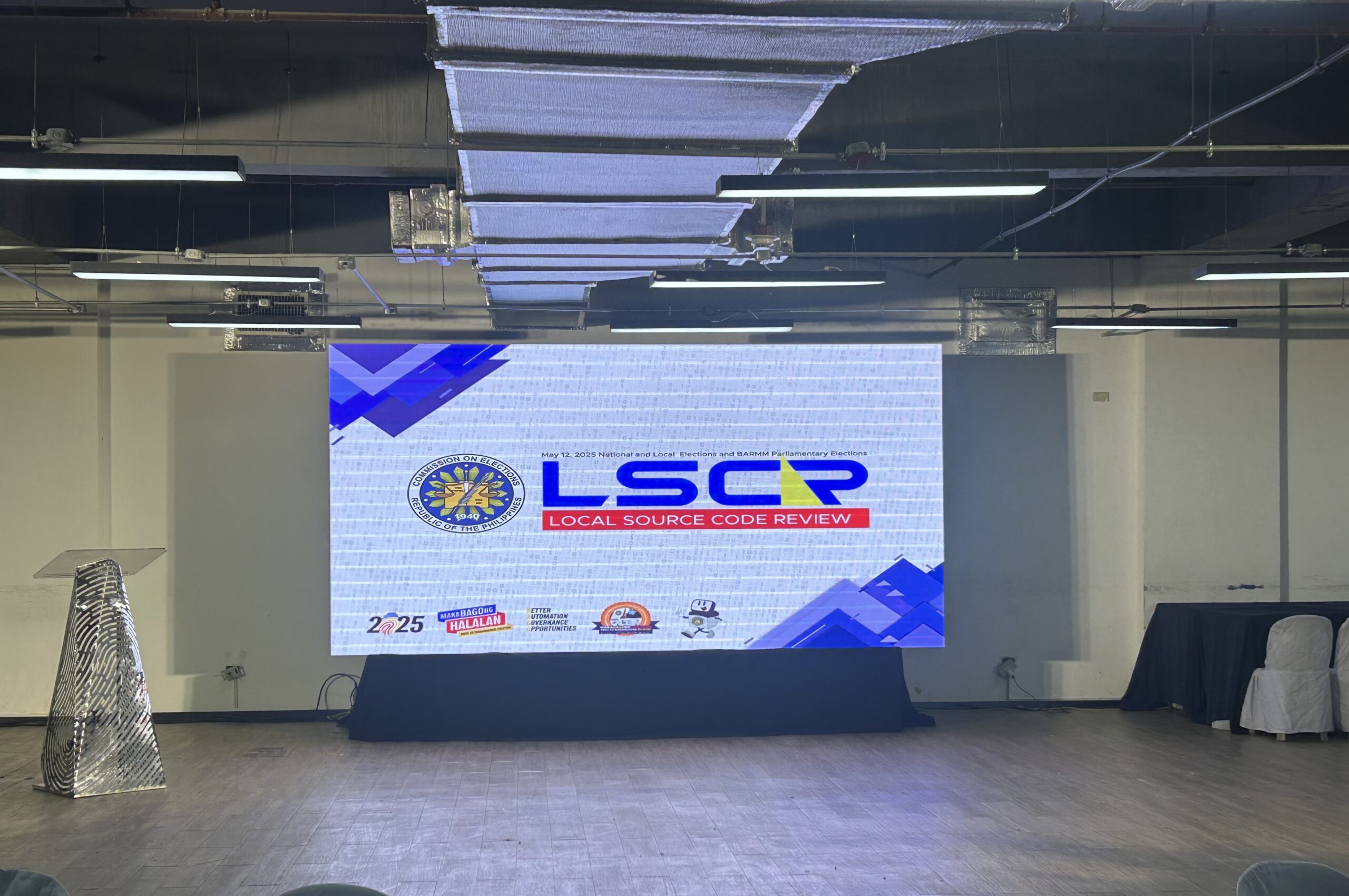
The Commission on Elections launches the local source code review on Friday, October 11, 2024 as part of the preparations for the 2025 elections. INQUIRER.net/ Dianne Sampang
MANILA, Philippines — The Commission on Elections (Comelec) on Friday vowed transparency in the launch of local source code review for the 2025 elections.
According to Comelec Chairman George Garcia, the source code serves as the “brain” that will feed the automated counting machines to check if they will function accurately on the day of 2025 election day.
“‘Yung source code, sa ordinaryo nating pang-unawa, yan ang utak na nagbibigay kaalaman sa ating mga makina, ano ang gagawin nila, papaano magpeperform yung makina, paano sila bibilang, paano magtatransmit,” said Garcia in an ambush interview.
(Source code, in our ordinary understanding, is the brain that feeds the machines on what they will do, how they will perform, how they will count and how they will transmit.)
“Pag-aaralan kung tama ba talaga yung command, tama ba talaga yung code, tama ba talaga yung nandyan sa utos ng mismong source code sa atin makina,” Garcia added.
Article continues after this advertisement
(It will study if the command is accurate, if the code is right, and if the command of the actual source code in the machines is right.)
Article continues after this advertisement
READ: Over 24,000 vote counting machines for 2025 polls now in PH
The Section 12 of the Republic Act (RA) No. 9369 states that “[o]nce an AES [Automated Election System] is selected for implementation, the Commission shall promptly make the source code of that technology available and open to any interested political part of groups which may conduct their own review thereof.”
Further, Deputy Executive Director for Operations Atty. Rafael Olaño echoed the sentiment of Garcia that the source code review will be done to check vulnerabilities in the AES.
“We are here to ensure that these machines, 110,000, including the contingencies, will perform accurately as we have envisioned them to be on election day,” Olaño said in his speech.
“For two months, we will test, we will prove, we will look for vulnerabilities in the system para lang massure na sa darating na eleksyon, ang ating mga machines ay magbibilang nang tama, magbibilang nang mabilis, magttransmit nang tamang resulta,” Olaño added.
(For two months, we will test, we will prove, we will look for vulnerabilities in the system to assure that in the upcoming elections, our machines will count [the votes] right, they will count [the votes] fast, and they will transmit the right results.)
READ: Comelec begins hardware acceptance tests for counting machines
Garcia also shared that they will open the review for IT experts, academe, citizen election watchdogs as long as they will be accredited and endorsed by the Department of Information and Communication Technology and Department of Science and Technology.
The review proper will commence on Monday, October 14, 2024 until December. It will be subject to extension once needed.
Garcia also assured that they will provide an update each day the review is being conducted.
“We will provide updates each day that we do the review to at least explain what happens in a language that everyone understands,” Garcia said.
The endpoint
In a media walkthrough, Comelec spokesperson Atty. John Rex Laudiangco said that this room contains 100 computer terminals that the source code reviewers will use. (Photo by Dianne Sampang/INQUIRER.net)
Comelec spokesperson Atty. John Rex Laudiangco explained that after the review was conducted, it will be certified as the final trusted build that will be used in the systems. He also said that it will then be deposited to the Bangko Sentral ng Pilipinas.
“If the review is already done, and the systems are now okay, that’s what we call the certification of the final trusted build. It will be deposited in the vault of the Bangko Sentral and it will stay there for the purpose of comparison if there will be issues in the elections,” Laudiangco said in Filipino during an ambush interview.
“We will see if what we started and finished here is just the same as what we deposited in the Central Bank,” Laudiangco added.
Under the Section 11 of the RA 9369, the Technical Evaluation Committee, composed of representatives from Comelec, DICT, and DOST, is expected to yield a “certification that the source code is kept in escrow with the Bangko Sentral ng Pilipinas” and a “certification that the source code reviewed is one and the same as that used by the equipment.”



































